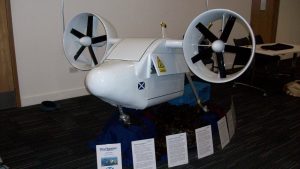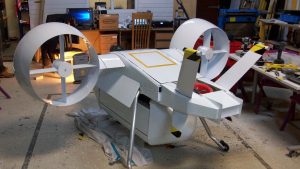An issue in every emerging industry is how it discovers its commercial place among other sales offers. Innovations that break the bounds of past practice are particularly difficult to introduce. Today, we often use the term “disruptor” to describe new tech and its impact.
The emerging UAV system industry is a case in point.
The idea of a “disruptor”, however, is only a broad brush warning flag, and none too helpful. We need to analyse what we are disrupting. In marketing science, one way to start is to examine the product/service offer, the price, the sales pathway and how we present/promote the new service solution.
It’s only when producers really understand these four “P’s”, as they are often known, that we can create an integrated marketing offer that generates sales growth and cash.
There is a paradox here which is always present in new tech products and services. They tend initially to offer an answer looking for a question; we know to some extent what our product or service might do, but we don’t have any creds in the bank to prove that. That means that those of us trying to raise investment, or pre-sell the service offer, can sound slippery.
Entrepreneurs, however, can drive through this paradox, using a combination of self-belief, no doubt a bit of bullsh*t, and changing their patter on the hoof. There’s a good reason for this, very often prospective buying clients don’t know what might help them, but they know what they do not want to keep spending money on if there are alternatives available.
This is the fun bit of being in “trade” – trying to match your four “P’s” to client needs while dealing in a fog. And what that comes down to is trust. The ideal client in new tech is one who is able to accept your lack of full knowledge, but would enjoy working with you to find out more.
We have a case in point in a developing collaboration with an infrastructure service team. They use small drones already and have managed to increase the productivity of inspections dramatically. We thought we could help by extending that capability through our Sky Hopper vehicle platform, offering more range, mass-carry and hence (in this case) data flow. But, in discussion, we realised that what they are doing now matches price and need well – we can add value, but not enough to justify our price. But, in those discussions we came up with another proposition which does match with our product and price and way of operating. Bingo …
In UAV use development, that leads to the next step needing trust – regulation and public trust. A lot of creative licence is being used to talk about UAV usage over urban or suburban areas. I’m not taken by this at all. Not only does this propose risk adoption by the public and the regulators, but an enormous risk by the industry. One technical failure with catastrophic consequences could set the industry back for years. It would also enhance a tendency of all regulators to adopt a strict precautionary approach, constraining operational advance through much higher technical strictures. The history of drug regulation and vehicle standards tell us this tendency is real.
The development of the UAV industry has to go from being a solution looking for questions, through to a repeating commoditised service offer. There are layers of innovations that need to be worked through to do this across the spectrum of tech that make up a commercial UAV system. If we allow ourselves to become encumbered with additional layers of regulation we will extend development periods well into the future while raising industry costs. That cuts our market potential down. We must prove our safety case.
At Sky Hopper®, we are spending the dark months in Scotland examining, literally, every bolt and join in our engineered structure. We need to prove that our platform is fully compliant with best aerospace practice. We are also beginning to look at how our operational procedures might be logged and audited for test flights. In some senses, we think we may need to lead the regulators by demonstrating a best-practice safety case, collaborating in the same way as we collaborate with potential customers on a commercial case.
Making our investors understand this need is something that we have been busy with as well (hence this article). While we want to be “fast to market” to please investors, we also need to be “slow for safety”. Squaring that circle is fascinating – and difficult – everyone has to trust everyone else.
To become an investor, or a collaborator, use the contact form on this site.
Safety and Trust February 6th, 2019Outreach Editor


